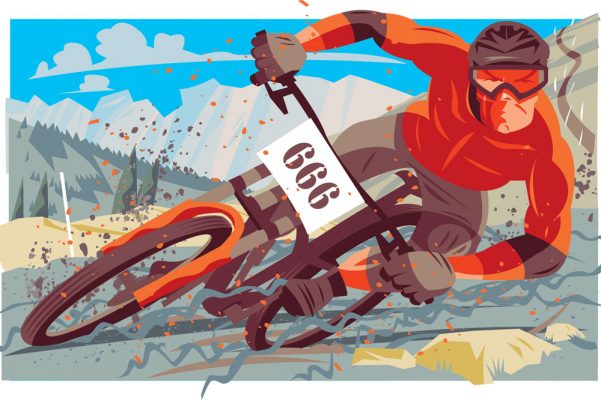We asked a scientist
Are the top racers built from different stuff to the rest of us, or can we all get a power boost?
>>> How to avoid the most common enduro mistakes
Lewis Kirkwood is the first person in the world to investigate the physiological characteristics that make elite enduro riders better than the rest of us.
And the sports science and immunology PhD student scientist at Edinburgh Napier University may well have discovered what makes a top rider.
(Citation: Physiological characteristics of elite v non-elite enduro mountain bike cyclists by Lewis Kirkwood)
Surely all he had to do was weigh a few winners and ask them what they ate for breakfast?
Not quite. First of all he put riders through lab tests. Some were elite and others just very good, but they all had to pedal increasingly hard on a stationary bike as he monitored their levels of blood lactate — a waste product from muscle activity which can eventually slow you down. Then Lewis put the riders through an enduro simulation on the stationary bike, consisting of a mix of efforts and power outputs.
We thought enduro was an outdoor event?
Be patient, we’re heading to the great outdoors but, before they hit the trails, Lewis had to find out how efficient the subjects were at using the air that they breathe, the composition of their bodies and their grip strength, in case the difference between the best and the rest was down to a simple reason.
A simple answer would suit us. Is there one?
Seems not. He couldn’t find any significant difference in their muscle mass, grip strength or even the size of their thighs. There was nothing obvious about their bodies to explain why some riders are unbelievable at enduro and others are merely credible.
My tea’s getting cold, so can you get to the point?
Keep it warm in the oven, because there’s no short cut to success. The test suggests elite riders can make better use of oxygen at critical stages of an enduro event, when they can put more power into the pedals but without hitting their limits. What’s more, they aren’t so hampered by the build up of lactate, so they can pedal harder for a longer period of time.
Isn’t that the lactic acid that appears in the blood as a result of anaerobic metabolism when oxygen delivery to the tissues is insufficient to support normal metabolic demands?
Uh, yes. Where did you read that?
Mosby’s Medical Dictionary. Carry on. What’s Lewis’s conclusion?
The elites produce more power at maximal levels and can cycle harder for longer without using up valuable carbohydrate stores in the body, so they can ride harder for a longer period of time.
How’s that going to help me win the EWS?
If you’re lucky enough that your body has those same characteristics, then you’re in with a shout of doing well at the EWS. The idea is that, with this knowledge, it’ll be possible to tailor individual training. But the physiology of elite riders is only part of the story — they still need to be able to ride fast over very technical terrain.
Hey, can Lewis test me now?
Mate, he’s too busy drilling down to find other clues about what makes an elite enduro rider.




